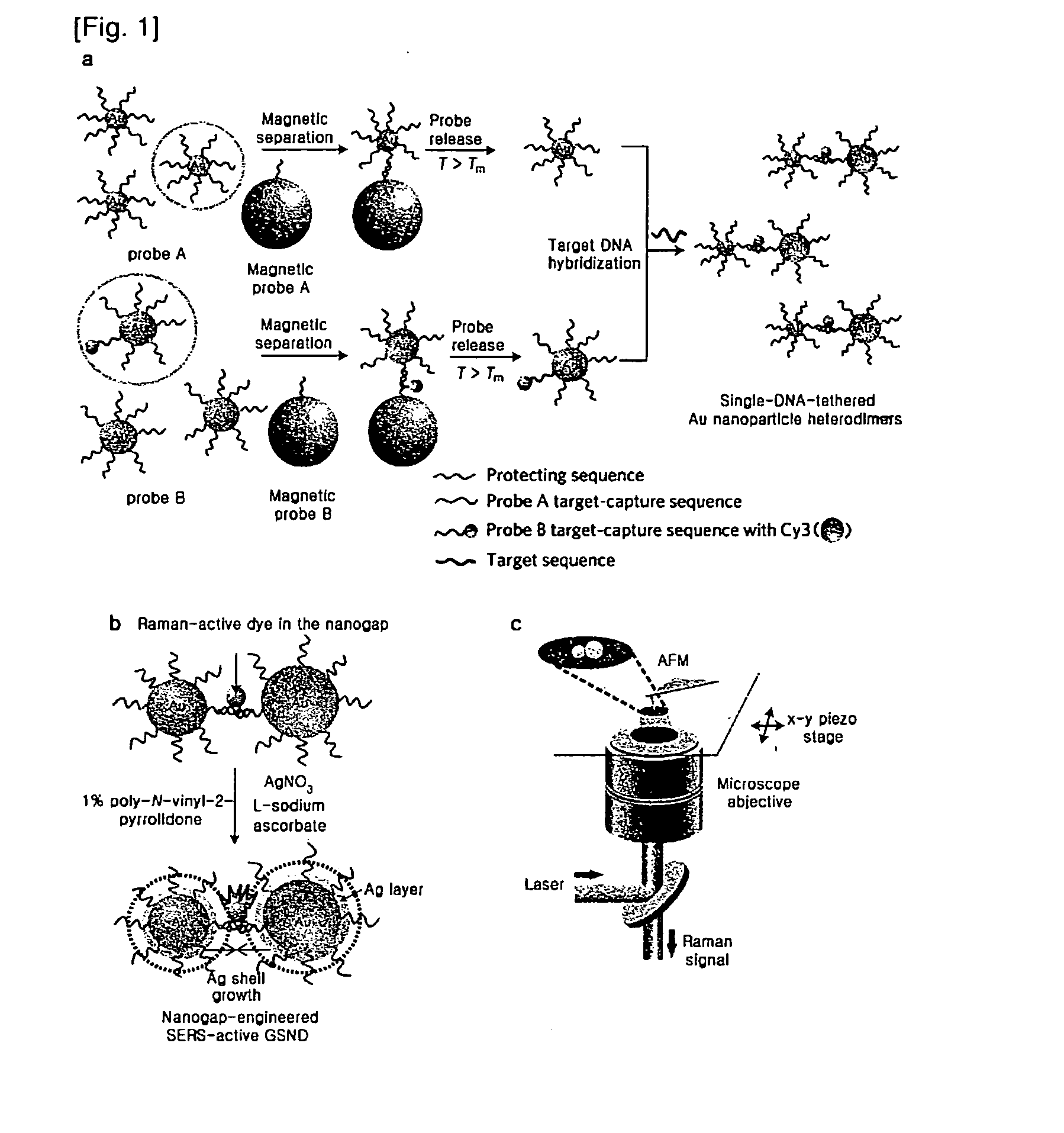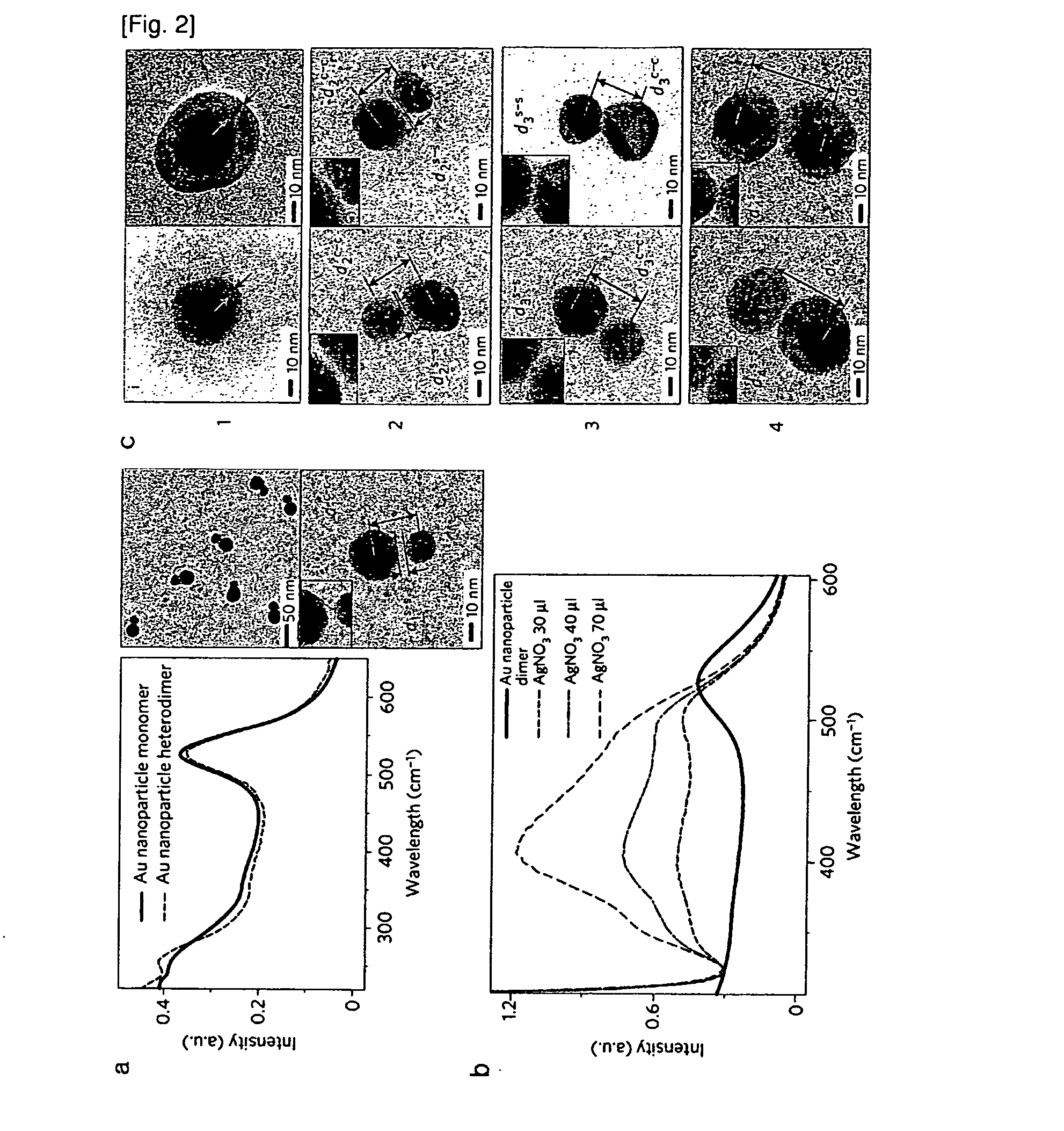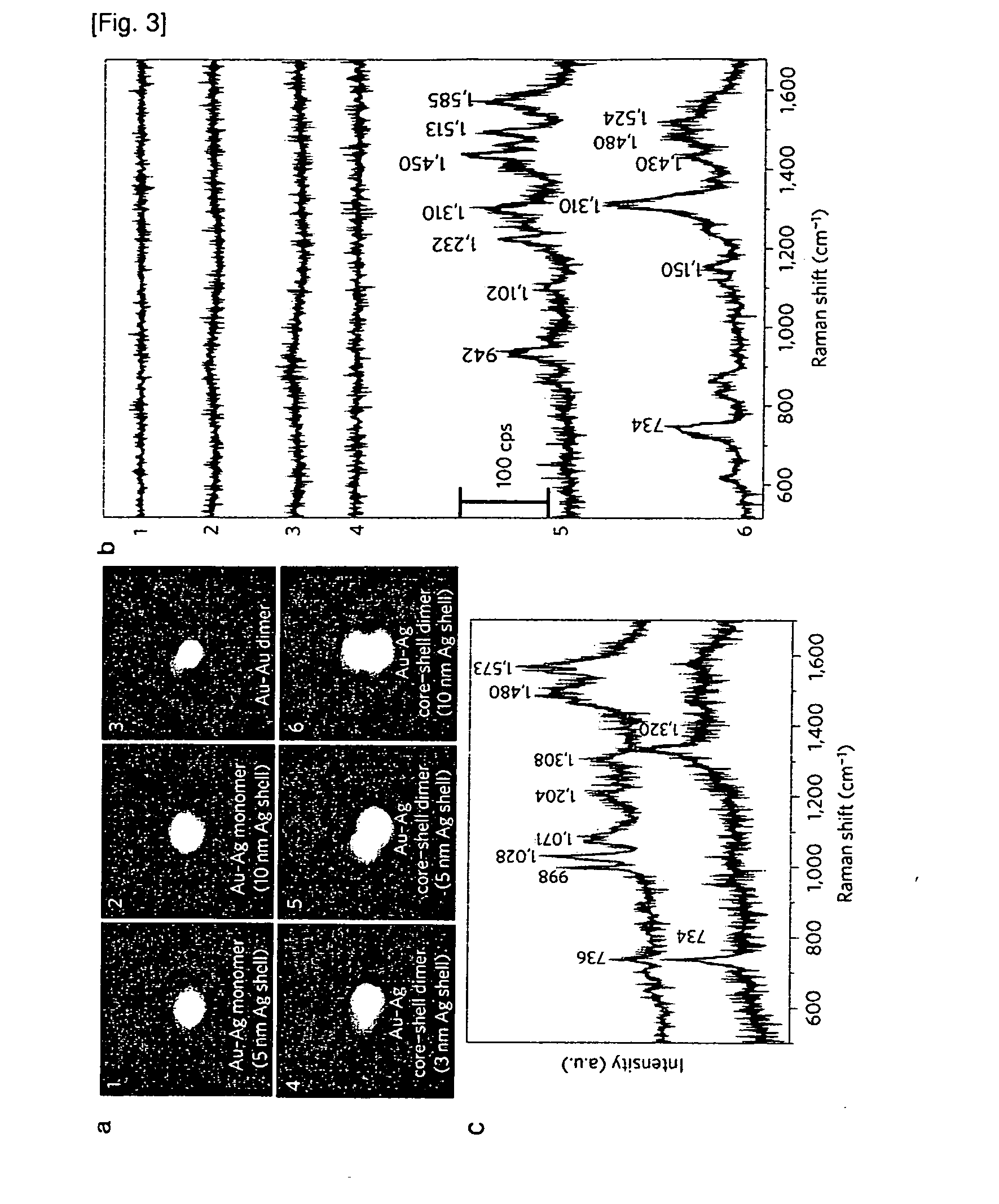Dimeric core-shell nanostructure labeled with raman active molecule localized at interparticle junction, use thereof, and method for preparing the same
a technology of active molecules and core shells, which is applied in the field of core shell nanoparticle dimers labeled with active molecules at interparticle junctions, can solve the problems of difficult handling of radioactive isotopes, short half-lives, and inability to store for a long period of time, and achieves enhanced raman scattering signals on the strong surface, high purity, and high purity
- Summary
- Abstract
- Description
- Claims
- Application Information
AI Technical Summary
Benefits of technology
Problems solved by technology
Method used
Image
Examples
example 1
Preparation of Dimeric Au—Ag Core-Shell Nanostructure Labeled with Raman Active Molecule (Cy3) Localized at Interparticle Junction
[0070]Based on a DNA-directed bridging method, the synthesis of a Raman active Au—Ag core-shell dimer was conducted using target oligonucleotide-tethered Au nanoparticles, with an Ag-shell being formed from a controlled amount of Ag precursor (FIG. 1).
[0071]Firstly, highly purified Au nanoparticle heterodimers were produced by precisely controlling the molar ratio between the protecting oligonucleotide and the target-capturing oligonucleotide, followed by an effective purification. Because the maximum distance (gap distance) between the Au nanoparticle (AuNP) surface and the Cy3 molecule still remained 7.5 nm, it needed to be decreased so as to give an amplified electromagnetic enhancement. A silver nano-shell was introduced since silver enhances SERS signals several times more than gold.
[0072]In detail, the DNA tethered Au nanoparticle dimers were coated...
example 2
UV-Visible Spectroscopy and HR-TEM Imaging Analysis
[0075]The formation of Au nanoparticle dimers (Cy3 used as a Raman Active molecule) was verified by UV-visible spectroscopy and high-resolution transmission electron microscope (HRTEM) images (FIG. 2). The UV-visible spectra show a very small red-shift after dimer formation, which is in agreement with the previously reported results by Oaul Alivisatos, et al. (Angew chem. 1999. 38(12), 1808). FIG. 2A is of typical HR-TEM images of the Au nanoparticle dimers. By a statistical analysis of at least 200 particles, it was found that 25% of the particles existed as a monomer and 65% of the particles as a dimer, and less than 10% as a multimer (trimer, tetramer and so on). The interparticle distance between the gold particles was found to be ca. 2-3 nm as measured by HR-TEM. In a solution (0.3M PBS), the interparticle distance was ˜15 nm which was expected to be far longer than that under dried conditions. Also, silver nanoparticles were i...
example 3
AFM (Atomic Force Micrograph) Analysis of Au—Ag Core-Shell Nanoparticles
[0077]FIG. 3A shows magnified AFM images (1×1 μm) of the core-shell monomer and heterodimer nanostructures (using Cy3 as a Raman active molecule), which were coincident in shape and diameter with HR-TEM images. FIG. 3B shows the correlated SERS spectra from the corresponding single AFM-imaged particles in FIG. 3A. No Raman signals were detected for the monomeric Au—Ag core-shell nanoparticles with 5 nm (FIG. 3A-1) and 10 nm (FIG. 3A-2) silver shells, respectively because they had no hot spots and only one Cy3 molecule per particle. The Au nanoparticle heterodimers without Ag shells or with a gap distance less than 1 nm therebetween did not show any detectable SERS signal either. This is due to insufficient electromagnetic enhancement under 514.5 nm laser excitation conditions. When the Ag shell thickness was <3 nm (FIG. 3A-4), no Raman signals were detected even after using an elevated incident laser power (˜200...
PUM
| Property | Measurement | Unit |
|---|---|---|
| Thickness | aaaaa | aaaaa |
| Thickness | aaaaa | aaaaa |
| Diameter | aaaaa | aaaaa |
Abstract
Description
Claims
Application Information
 Login to View More
Login to View More - R&D
- Intellectual Property
- Life Sciences
- Materials
- Tech Scout
- Unparalleled Data Quality
- Higher Quality Content
- 60% Fewer Hallucinations
Browse by: Latest US Patents, China's latest patents, Technical Efficacy Thesaurus, Application Domain, Technology Topic, Popular Technical Reports.
© 2025 PatSnap. All rights reserved.Legal|Privacy policy|Modern Slavery Act Transparency Statement|Sitemap|About US| Contact US: help@patsnap.com



